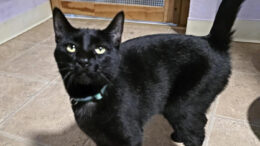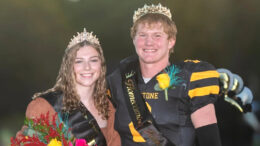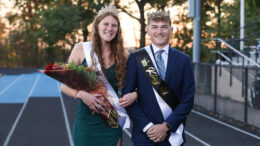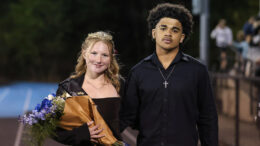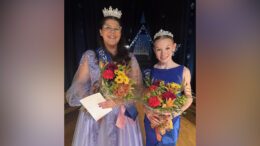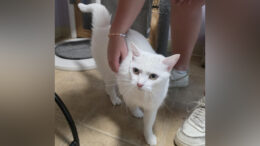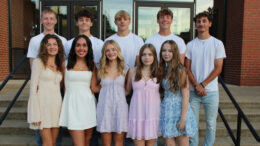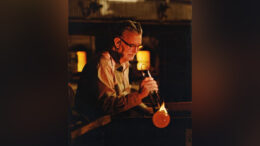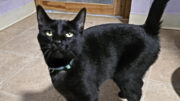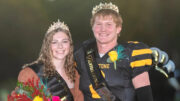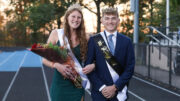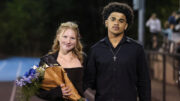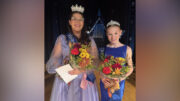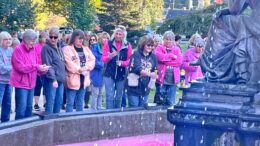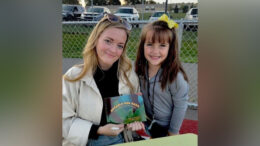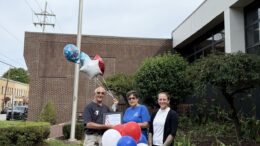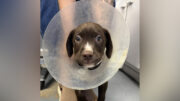Proper planting and aftercare techniques will ensure the success of new trees. Longer days, warmer temperatures, and buds breaking are sure signs of the arrival of spring. It also means tree planting season is upon us. While planting new trees can be fun and satisfying, care should be taken to follow the proper steps to ensure we are rewarded for years to come with healthy and safe trees. This article provides an overview of tree planting from planning to aftercare. A more detailed look is provided in the publication, Planting and Aftercare of Community Trees (https://extension.psu.edu/planting-and-aftercare-of-community-trees).
Planning and Site Analysis
Thoughtful planning and preparation are key to the long-term success of newly planted trees. Before sticking a shovel in the ground, it is important to assess the planting site. Climate, soil conditions, presence of utility lines, and proximity to structures, roads, and sidewalks all need to be considered in picking a tree that will thrive in the environment where it is planted. A walk around the site will provide an opportunity to observe site condition and take measurements to help determine what size tree can be planted. Beyond onsite observations of soil texture, drainage, and compaction, a soil sample can be collected to test for pH and fertility. These observations are then considered with objectives for planting, which might include, among others, screening or enhancing views, noise reduction, erosion control, or fitting with the design of the existing landscape. All this information can then be used to narrow down a list of tree species that will fit the space and work with the site conditions. For a more detailed look at planning for tree planting, view the recorded webinar Site Analysis: The First Step to Successful Tree Planting Projects (https://extension.psu.edu/site-analysis-the-first-step-to-successful-tree-planting-projects). For a look at a variety of tree species and the site conditions in which they thrive, view the recorded webinar Tree-Vitalize Recommended Trees on Parade! (https://extension.psu.edu/treevitalize-recommended-trees-on-parade-webinar)
Nursery Stock
Once the appropriate tree species is selected, it is time to source the tree and get it in the ground. Trees can be purchased from nurseries in a variety of sizes and most often in one of two forms – container grown or balled and burlapped (B&B). Container grown trees are grown in a container from seed until the time they are sold. B&B trees are field grown and then the root ball with soil is dug from the ground, wrapped in burlap, and finished with a wire basket to support the root ball. A third, less-commonly available form of nursery stock is bare root. Similar to B&B, the trees are field grown and then dug, but the soils are washed from the roots, leaving a bare root ball. Each form of nursery stock has benefits and drawbacks and there are different considerations for each when planting. Most common for larger landscape tree nursery stock (1.5 inch or greater caliper) is B&B form, while container grown trees will typically be available in smaller sizes (less than 2-inch caliper). A balled and burlapped (B&B) tree ready to ship from the nursery. After the tree was dug, the root ball was wrapped with burlap and placed in a wire basket to support the root ball. Twine was used to secure the top of the burlap around the trunk of the tree.
Regardless of nursery stock type, source the tree from a reputable nursery. Look for a tree with a strong and straight trunk without damage to the bark or broken branches. The tree should look healthy and not show signs or symptoms of pests or disease. B&B trees should be freshly dug, with a firm root ball. Container grown trees should not have circling roots. There should not be weeds growing from the container or root ball.
Planting
Planting should occur as soon as possible after delivery of trees to the site. The planting site should be prepared by hand digging the planting hole wide and shallow. This will allow the tree to be planted at the proper height, while providing room laterally to maneuver the root ball into place. The wide shape of the hole, at least twice as wide as the root ball, will also loosen the soil laterally, where most new root growth will occur. The depth of the hole should be no deeper than the depth of the root ball. For B&B trees, some soil may need to be removed from the top of the root ball to uncover the root flare. The growing and harvesting of B&B from the field can result in extra soil getting piled up on top of the root ball. Failure to remove this excess soil at the time of planting can result in the tree being planted too deep, leaving soil along the trunk of the tree, which can lead to decay and the potential for the tree to fail and fall over.
About half the depth of the root ball on the B&B tree was extra soil on top of the root flare. The original top of the root ball extended up the darkened area of the trunk for several inches. This tree should be positioned with the root flare at the soil surface and the now exposed trunk all above ground.
Once a B&B tree is positioned in the planting hole with the trunk vertical and not leaning, the wire basket should be cut back to remove as much as possible, but at least the top third. All string holding the burlap in place around the trunk should be removed, and the burlap should be pulled back. Burlap from the top third of the root ball should be cut off to ensure no burlap sticks up above the soil surface after backfilling.
For container grown trees, remove the root ball from the container and inspect the root ball for circling roots. Use a saw to shave the outside of the root ball to break up the circling roots. Alternatively, a series of vertical cuts can be made around the outside of the root ball with a knife, though this is less effective. This container grown tree has become root bound with encircling roots that could eventually lead to girdling roots if not corrected at the time of plating.
Once the tree is positioned in the hole at the right depth, with the root flare at the soil surface, backfill the hole with the soil originally dug from the hole. As soil is filled into the hole, gently tamp it down to prevent large air pockets. Occasional watering during backfilling can help settle the soil in as well. Once fully backfilled, rake the soil surface even. Ensure no burlap is sticking out above the surface, as it will wick moisture out of the ground. Also make sure the top of the root flare is visible above the soil. Finish the planting with a three-inch layer of composted mulch, with the mulch kept off the root flare and trunk to avoid fungal decay. The tree should then be deeply watered to settle the tree and soil. Staking is only needed if the tree does not remain stable (e.g. high wind areas) or in public spaces or high traffic areas where a barrier is needed to keep people away from the tree until it is established. For a more detailed look at the tree planting process, check out the Planting Landscape Trees: https://extension.psu.edu/planting-landscape-trees recorded webinar. To learn more about planting in built environments, such as in sidewalk tree pits, view the recorded webinar Modifying Tree Planting Sites in the Build Environment: https://extension.psu.edu/modifying-tree-planting-sites-in-the-built-environment. More details on planting bare root trees are available in the recorded webinar Large Bare Root Trees: Cost Effective and Volunteer Friendly https://extension.psu.edu/large-bare-root-trees-cost-effective-and-volunteer-friendly.
Aftercare
Both short-term and long-term success of any newly planted tree depends on the tree receiving the necessary care and maintenance after planting until the tree is established. First and foremost, aftercare is about proper application of enough water until the tree is established, meaning enough new roots have grown in to allow the tree to access enough water under normal soil moisture conditions. Prior to being established, B&B trees do not have enough roots to take in enough water on their own due to the roots loss when the trees are dug in the nursery.
Container grown trees need are grown in a soilless medium, which dries out quickly, meaning these trees also need supplemental water provided until the roots can extend into surrounding native soil. The time for a tree to establish can be roughly equated to the caliper of the tree at the time of planting where one inch of caliper equates to one year to become established. The typical two-inch caliper landscape tree will need two years to become established, so water should be provided to a tree this size for two years. The amount of water provided will depend in part on local weather conditions over the course of the growing season, but water is most needed during hot, dry periods during the summer. A two-inch caliper tree should have 20 to 40 gallons of water applied slowly and evenly across the top of the root ball each time it is watered. In Pennsylvania, typical weather conditions necessitate watering trees in their first year in the ground frequently through the summer and early fall, two to three times a week in the hottest and driest months of July and August, and even into September. Watering once a week should continue well into the typically dry autumn season, even after leaf drop. Watering can be reduced in subsequent years until establishment. For example, in the second year of establishment for a two-inch caliper tree, watering can be reduced to once a week during the hottest and driest months, and one every other week in other months. This Tree Gator watering device is installed around the trunk of a newly planted tree and will hold 15 gallons of water. It is one way of providing a slow, even application of water to the root ball of the tree during establishment. (https://extension.psu.edu/media/wysiwyg//extensions/catalog_product/39481521f63940d9a4290484cefa9e88/t/r/tree-gator_1.jpg).
In addition to watering, maintenance and care for newly planted trees may include fertilization, refreshing mulch, and pruning to remove dead or broken branches. Generally, fertilization is not needed after planting in many sites. In more built environments, like sidewalk tree pits, some fertilizer may help trees to establish. In any case, fertilizer should be applied judiciously, based on results of a soil fertility test. Pruning on newly planted trees should include removing any dead or broken branches or other tree parts. Training pruning to establish good structure can be started after the tree has established. For a more detailed look at aftercare of newly planted trees, view the recorded webinar Planting Aftercare: Essential to Tree Establishment and Survival (https://extension.psu.edu/planting-aftercare-webinar-essential-to-tree-establishment-and-survival). For a complete guide to tree planting, including extensive diagrams and photos, check out the publication Planting and Aftercare of Community Trees: https://extension.psu.edu/planting-and-aftercare-of-community-trees.


